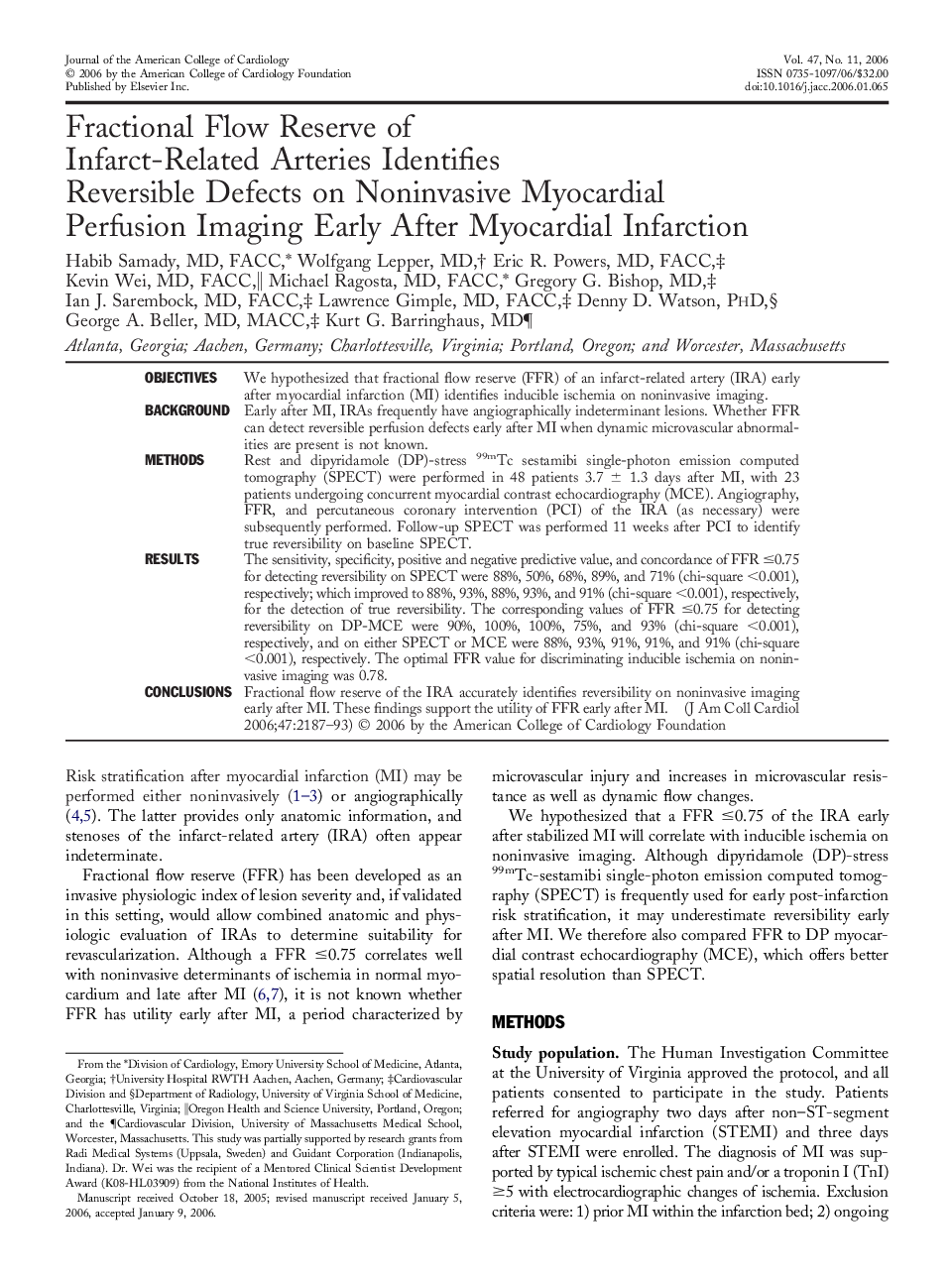| Article ID | Journal | Published Year | Pages | File Type |
|---|---|---|---|---|
| 2954155 | Journal of the American College of Cardiology | 2006 | 7 Pages |
ObjectivesWe hypothesized that fractional flow reserve (FFR) of an infarct-related artery (IRA) early after myocardial infarction (MI) identifies inducible ischemia on noninvasive imaging.BackgroundEarly after MI, IRAs frequently have angiographically indeterminant lesions. Whether FFR can detect reversible perfusion defects early after MI when dynamic microvascular abnormalities are present is not known.MethodsRest and dipyridamole (DP)-stress 99mTc sestamibi single-photon emission computed tomography (SPECT) were performed in 48 patients 3.7 ± 1.3 days after MI, with 23 patients undergoing concurrent myocardial contrast echocardiography (MCE). Angiography, FFR, and percutaneous coronary intervention (PCI) of the IRA (as necessary) were subsequently performed. Follow-up SPECT was performed 11 weeks after PCI to identify true reversibility on baseline SPECT.ResultsThe sensitivity, specificity, positive and negative predictive value, and concordance of FFR ≤0.75 for detecting reversibility on SPECT were 88%, 50%, 68%, 89%, and 71% (chi-square <0.001), respectively; which improved to 88%, 93%, 88%, 93%, and 91% (chi-square <0.001), respectively, for the detection of true reversibility. The corresponding values of FFR ≤0.75 for detecting reversibility on DP-MCE were 90%, 100%, 100%, 75%, and 93% (chi-square <0.001), respectively, and on either SPECT or MCE were 88%, 93%, 91%, 91%, and 91% (chi-square <0.001), respectively. The optimal FFR value for discriminating inducible ischemia on noninvasive imaging was 0.78.ConclusionsFractional flow reserve of the IRA accurately identifies reversibility on noninvasive imaging early after MI. These findings support the utility of FFR early after MI.
